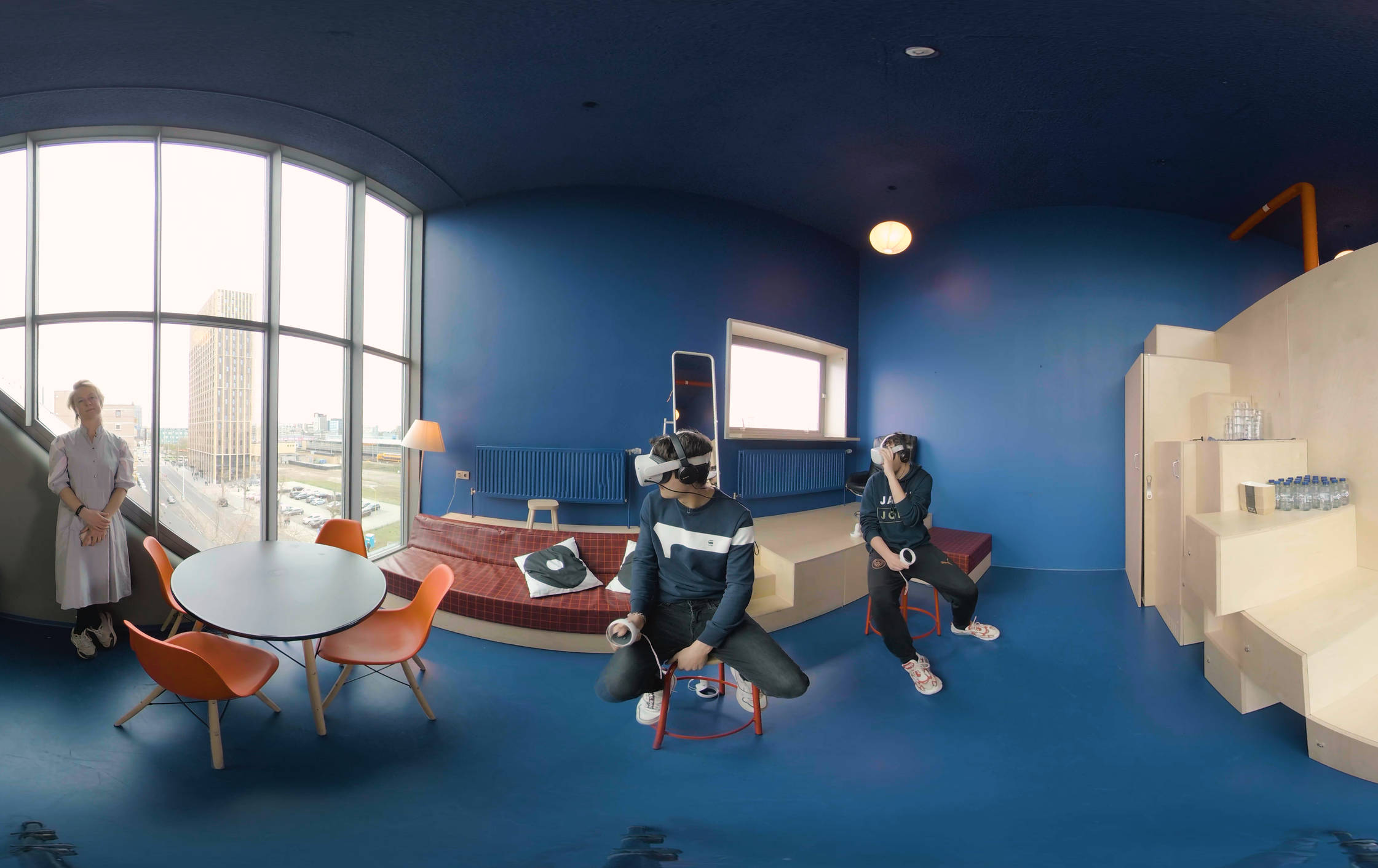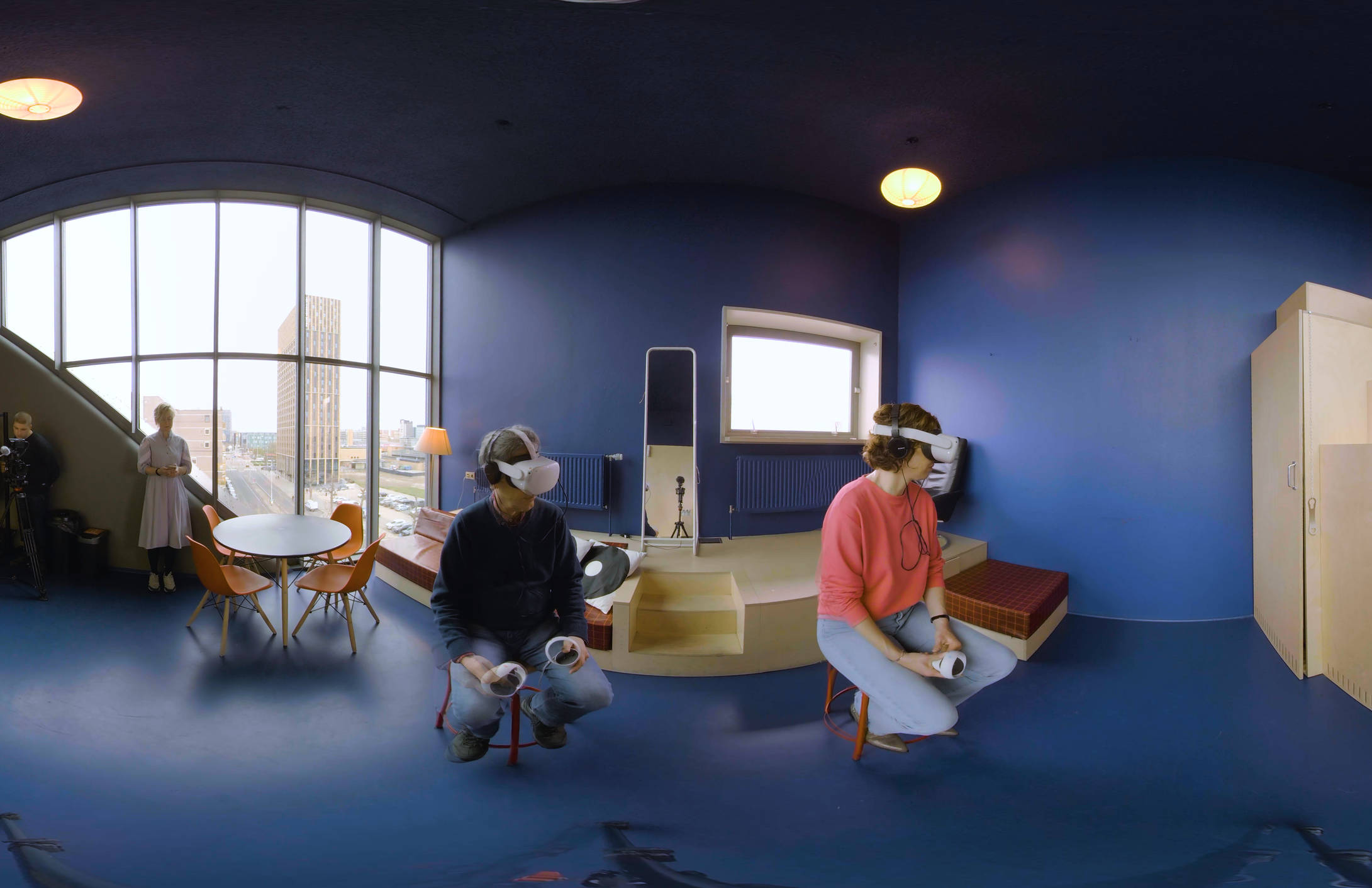"We want to fight polarization by designing empathy"
When tensions arise in a neighborhood, it helps to put VR headsets on residents and young loiterers and immerse them in each other's worlds, Jeroen van Erp (62) of design firm Fabrique discovered. He calls himself a social designer. ‘We want to fight polarization by designing empathy.’

This article appeared on the website of Het Parool, a Dutch newspaper based in Amsterdam. We have had it translated into English for the visitors of our website. Credits: Edo Dijksterhuis for Het Parool. November 11, 2022.
Ask Jeroen van Erp about the biggest or best design innovation of the past decade and you'll get an unexpected answer. It's not the Apple iPad, Elon Musk's electric car or a 3D-printed home. The founder of Fabrique, a design firm that originated in Delft and has had an office in Amsterdam since 2007, replies: "The law that banned free plastic bags in shops. Many people will say that's not design, but that depends on your definition. This law required imagination, it deviates from the beaten path and the impact on behavior is enormous. Over 90 percent of consumers now take their own bag to the supermarket."
Van Erp has a different idea from most about the definition of design. For him, it is not about beautiful chairs or vases, trendy gadgets or other gizmos. "That's design of the old world," he says. "Design today is not about stuff, but about experiences and meaning."
He gives an example. "In the old world, designers made a bicycle or coffee packet. In the new reality, they come up with a bike-sharing system or, like Nespresso, they set up an entire ecosystem around the coffee experience, where you are personally contacted and are sent a maintenance kit for your coffee maker just before you need it."
Contemporary design is more about services than things, and is increasingly focused on improving our lifestyles. For this reason, Van Erp calls himself a social designer. "Complex social problems are our playground. We want to make a difference in individual lives and on a global level. That's why we like to address the big issues of our time; the energy transition, sustainability, healthcare."
The current Dutch government wants to use the creative industries to address major social issues. One of today's biggest problems, and the one Van Erp wants to get stuck into, is polarization. To tackle the out-of-hand us Vs them mentality, he co-initiated the Bubble Games Consortium three years ago. His design agency Fabrique initiated a project to combat polarization. Van Erp asked a few of his hundred-odd Fabrique employees, TU Delft, and social partners, to ponder a question with him: can we design empathy?
Like sitting on the couch
The location that Fabrique chose to answer that question is Meerhoven. Part of the Dutch city of Eindhoven, this district was built a few decades ago for families with small children. There is plenty of peace and quiet. But the architects forgot that the children would grow up and be bored to death once they were adolescents. For lack of anything better to do, they hang out in the shopping center, not necessarily to make mischief, but with enough noise that nearby residents are bothered. The residents have called the police on the mallrats a number of times in recent years, which has caused some bad blood.
"In a recent book, Bart Brandsma writes that polarization, because that is what we are talking about, occurs when pushers and joiners are involved," Van Erp explains. "But there is also the quiet middle that can play a role in bringing the parties together."
It was not easy to mobilize that quiet middle in Meerhoven. A radicalized resident spread a rumor that the project was some kind of trick by the municipality. This idea intimidated her neighbors to the extent that no one wanted to join in. Fortunately, two residents and two boys were undeterred. Van Erp had them take turns telling their side of the story on camera, and then played those clips in virtual reality.
In the project’s documentary, titled As if I know you already..., you can see the 16-year-old soccer fan and the slightly older cookery-school student twisting in their seats, visibly uncomfortable. As they say later, once the VR headset is off again: "It was like sitting on the couch with those people!" The same goes for the single mother of 43 and the music-making sixty-something: "Oh, so that's how those boys live!"

Bubble Games does not use any of the amazing effects that are possible in VR these days, Van Erp admits. “Our focus is on the immersive nature of the technology; viewers are completely immersed in each other's worlds, and that reduces the distance in an instant. Within a few minutes, they are no longer talking about "those others" and are open to alternative views. After the VR session, we all sat down together and the conversation flowed immediately."
Pocket version
The Bubble Games Consortium's experiment has not gone unnoticed. The project was nominated for the Hein Roethof Prize, which the Dutch Ministry of Justice and Security awards every two years for crime prevention projects.
That is exactly the role Van Erp sees designers playing in the future. "And so does the Dutch government, fortunately," he says. "The coalition agreement states that the government should look more to the creative industries in finding solutions to large, complex problems. It’s right there on page 29. Of course, it’s all just nice intentions and words, unless we designers build a library of successful cases. Policy makers need to see what social design can do."
In its pilot form, the approach developed is too cumbersome and expensive to apply on a large scale. You need expensive cameras and professionals to operate them. "But in collaboration with students from Fontys University of Applied Sciences, we are working on a pocket version," Van Erp said. "Those can be taken home by project participants to take videos in their own environment with the desired 'close-up' effect. Once that version is in place, we can roll out this project on a large scale. Chances are that this will also happen in Amsterdam. Municipality officials were present at the launch of As if I know you already... and they were very interested."
In Eindhoven, the Bubble Game project will get a follow-up in any case. The contact between residents and young adults proved so fruitful that it had immediate concrete results. The soccer boy's proposal to hold a contest for a meeting place for all residents resonated with the municipality, which promised to make the winning design a reality. “Look at that," says Van Erp, visibly pleased. "That's also new design: you get outcomes you don't foresee beforehand. We design while discovering and discover while designing."
Social design
The idea of social design dates back to the 1960s when Victor Papanek first wrote about design as "a positive force in society”. The Austrian American was annoyed by the pollution and waste caused by mass production, and thought designers should take moral responsibility for the stuff they bring into the world. He argued that designers needed to look more at people's real needs rather than the stuff they covet.
In the Netherlands, social design has been on the rise for the past ten to fifteen years. Increasingly, alumni of the Design Academy Eindhoven, but also of design schools in Delft, Utrecht, Amsterdam or elsewhere, are socially engaged. What Design Can Do, the annual design festival organized in Amsterdam since 2011, is largely focused on issues that require social design answers.